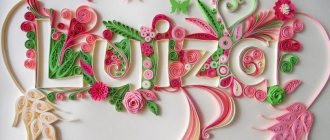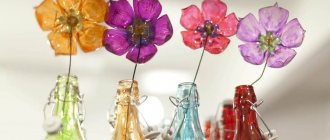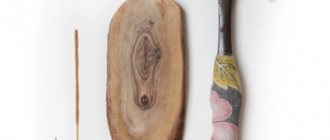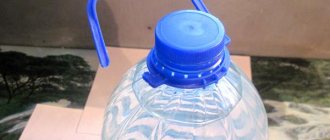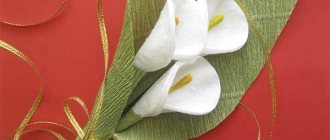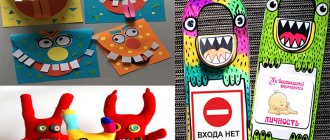Izhevsk shoe covers and capsules for them are distributed not only throughout the regions of Russia, but also to the CIS countries - Kazakhstan, Kyrgyzstan, Belarus. The city, founded as a factory and considered not environmentally friendly, is one of the leaders in collecting plastic and recycling raw materials.
From 20 to 220
Production from low-density polyethylene in Izhevsk, the capital of Udmurtia, was established back in 2010. In less than 10 years of operation, volumes have grown significantly.
“We brought the first machines from China ourselves,” says Sergei Losin, head of Lokomotiv LLC. – At that time, shoe covers had just appeared on the market, pricing had not collapsed, and competition was not as widespread as it is now. We also thought that shoe covers are a good consumable. The most important raw material – polyethylene granules – was available close at hand.
According to Losin, since 2010, the number of products produced - medical shoe covers - has increased more than 100 times. This is due to the fact that at first the work was carried out on only one machine, but now there are already 15 of them. And the number of employees from 20 people has increased to 220.
The difference between this company and many others is that out of 220 employees, more than 160 are people with disabilities. And the founder of Lokomotiv LLC is the All-Russian Society of Disabled Persons of the Udmurt Republic.
At the Russian Investment Forum in Sochi, the company was recognized as the “Best Social Project” for 2022 for the employment of people with disabilities.
“In the labor market, we are already experts in the field of employment of people with disabilities,” says Sergei Losin, head of Lokomotiv LLC and deputy chairman of the All-Russian Society of Disabled People. –
As with waste recycling, the country does not yet have a well-functioning system for employing people with disabilities. Therefore, people often come to us with questions, because over the years of work, our organization has already developed its own methodology.
Plastic is different from plastic
And more than two years ago, the company began processing.
“Before that time, we didn’t even think about processing,” says Sergei Alexandrovich. “We simply took primary granules and made various types of products from them: shoe covers, medical masks, plastic gloves, raincoats and much more. And then they discovered PET.
We decided that we would no longer buy capsules for shoe covers, but would start producing them ourselves. But making them in the generally accepted way is very expensive, and competition is high. They decided to make the capsules from PET, because it is lying under our feet. We set up collection, bought an extruder, started making film and molding it. And the capsules turned out.
In fact, the process of making capsules turned out to be not so simple and fast. It took Lokomotiv six months and about 5 million rubles for commissioning work.
“It was very difficult to make a lock that fastens one half of the capsule to the other,” continues Sergei Losin. “But we did the math and found out that such capsules are much cheaper than existing analogs.
Why? An injection molding machine melts raw materials and consumes a lot of electricity. And we just heat it up, and the PET takes the shape of a press. In this case, no more energy is wasted than when ironing.
In addition, the cost of raw materials differs. So, polypropylene crumbs cost 115 rubles per kilogram - and this is in bulk, at a good price. And our raw materials, taking into account collection, washing, drying and processing, cost about 60 rubles, that is, 2 times cheaper. And the quality is not inferior. If we talk about capsules, then capsules made from PET are even better than those made from polypropylene, since their walls are harder.
But there is another problem that may stop entrepreneurs from choosing this type of production: it is quite easy to find employees for injection molding machines, there are many of them. And for an extruder for processing PET - you can count them on one hand, there are only 5-6 people in all of Russia, all of them are worth their weight in gold.
“Our extruder operator has a technical education, but he learned to work on an extruder from scratch: on the Internet, studied Western sources,” says Sergei Alexandrovich. “And now we can say that we have learned to produce beautiful PET from waste - sheets with a thickness of 0.2 mm to 1.5 mm. This sheet can be given any shape or pattern. It is hard and wear-resistant. Even more budget-friendly versions of plastic windows (for a dacha, for example) are made from such sheets.
And if you compare PET and polycarbonate, PET is inferior only in heat resistance. Greenhouses made from it are not suitable for hot regions; they may begin to melt. For Moscow or Udmurtia, for example, where the air temperature practically does not rise above 30 degrees, a PET greenhouse will not lose to polycarbonate, and will cost at least 2 times less.
One and a half rubles - for 1 ruble
In the future, the company plans only to increase production volumes, but now they are stopped by a lack of raw materials. The solution to the problem has already been invented.
— We started organizing bottle collection points. In the USSR, I still remember, there were reception points everywhere. And it was considered the norm to hand over glass or plastic bottles. And there was less garbage on the streets then.
If you organize such reception points correctly - for money, for a reason, then everything should work out. It’s just that even I wouldn’t sort the garbage - and not because of laziness, but because of lack of time - it’s easier to put everything in one bag and throw it in one container.
And if they give some money for bottles, why not sell them? We will accept a 1.5 liter bottle for 1 ruble. Thus, people who accumulate plastic bottles can do not just a conscious act, but also get some money for them and buy, for example, a loaf of bread.
The other day we opened the first reception point in Izhevsk. As soon as things get going, we are ready to open similar points throughout the republic.
Not by volume, but by mass
By the way, a joint project of the Public Chamber of the Urals and a public consumer organization can help Lokomotiv extract plastic bottles. For now it is only experimental and will begin work this spring.
The organizers have selected 10 Izhevsk apartment buildings, whose residents will be asked to sort garbage and put it in separate containers. The cost for garbage removal will be calculated not by volume, but by weight. And not according to the standard, but in fact. What is important is that sorting will help to reuse some of the waste.
— This project is just an experiment for now. We cannot yet say with certainty that this method of garbage removal will be cheaper - this remains to be tested,” says Alexander Evseev, chairman of the consumer public organization. – But if we talk about plastic bottles, you will agree that they are larger in volume than in mass.
Photos courtesy of Sergei Losin.
The site contains a number of materials on the recycling of seemingly unnecessary and useless things. In hospitals and clinics you can find vending machines for shoe covers. You put five rubles into the machine and at the exit you get a small plastic box with a couple of shoe covers stuffed into it. After using the shoe covers, an unnecessary container remains. One of the options for extending the life of the container is making a toy for a cat, cat or kitten. How to make such a toy?
The designs of a homemade toy can be very diverse, but to spark your thoughts, I will give two options. To make it yourself, we will need a container from shoe covers, a shoe lace, a piece of soft insulated wire or a piece of twine, a rattle on a clothespin for a fishing rod (costs 10 rubles). A pair of scissors with a sharp tip will suffice.
Decoration in nautical style
To create a unique decoration in a marine style, you will need a small plastic or glass bottle, which should be filled with plain water and attributes of the seabed: sand, shells, large pearl-like beads, coins, shiny beads and glass shards. When all the components of the composition are folded, add a drop of blue food coloring, a few drops of vegetable oil and a little glitter into the bottle. All that remains is to tighten the cork well and the stunning decoration is ready.
Toy
Armed with scissors, felt-tip pens and paints, you can turn unnecessary plastic containers into fun toys, the creation process of which, as well as the result itself, will undoubtedly attract the attention of children.
Continuing the theme with your own hands.
Every housewife strives for ideal cleanliness and order in the house, so all women try to get rid of excess trash as quickly as possible. But you don’t need to be so categorical; for example, plastic food packaging should be saved. Today we will share with you the secret of creating a charming little thing from plastic containers. Children will be delighted with this idea; by the way, they can be involved in joint production.
YOU WILL NEED plastic packaging scissors hole punch colored permanent markers PROCEDURE Cut out the bottom of the package. All you need is the flat part of a plastic container.
Print any outline picture. You can use coloring for these purposes.
Redraw the picture onto the plastic using permanent markers. Please note that the final size of the figurine will be reduced by approximately 70%. Therefore, initially the drawing should be large.
Using a hole punch, make a small hole above the design and cut out a plastic figure along the outline.
After preheating the oven to 165 degrees, place the plastic figures on a baking sheet lined with parchment paper. Bake the figures for exactly 3 minutes.
After baking, each of the figures will become smooth and denser. Now they can be attached as decoration to the bracelet.
These figures can also be used as Christmas tree decorations! If you liked this craft idea, share the article with your friends. My name is Irina, I live in Germany - in a country where absolutely everything is sold in plastic packaging, which migrates in tons from stores to trash cans. I have been doing various types of handicrafts for a long time and am constantly faced with the issue of optimal storage of a bunch of little things that accumulate all the time and require new boxes, caskets, etc. In this master class I want to show several ways to create convenient storage containers from various plastic packaging. The advantage of this kind of containers is that they are easy to make at home, they can be made in any size and in any quantity, the transparency of the plastic allows you to quickly find the right thing, the material for containers can be found in every home, such containers for small items can also be used on in the country house, in the garage, etc... So, first, let's make the simplest mini-container from a plastic bottle:
We heat the tip of the knife to make it easier to start cutting the bottle.
Cut the bottle into two parts with a knife. If the bottle does not have edges, in order to avoid large errors when cutting, glue the tape at the required height and cut the bottle exactly along the edge of the tape.
Let's melt the edges of the bottle a little to avoid cutting your hands during further processing. The bottle should be kept at a distance of 0.5-1 cm from the flame, turning evenly. The unevenness of the edges after heat treatment will hide the crocheting.
We heat up a steel knitting needle and make holes along the edge of the bottle, which will have to fit the size of the hook with which we will tie the edges of the bottle.
When you pierce plastic with a hot knitting needle, sharp and dark traces of plastic often remain on the surface... They can be removed in different ways, I use a regular grater to clean the feet (the emery is too sharp - it damages the surface of the plastic; using a knife is not very convenient)
Now we proceed to crocheting the edge with a single crochet.
We thread the tip of the thread and glue it inside the container.
Then we thread a thick thread into a gypsy needle and sew the entire row with colored thread, without missing a single hole.
We thread the end of the thread and glue it again.
If desired, our small container can be decorated. The easiest way to decorate is with double-sided tape, ribbon and rhinestones. You can also use thread winding on double-sided tape.
Cut the tape to the required length and glue it with double-sided tape. We cut off the excess tape.
We make a bow at the junction, you can stick on a rhinestone and the mini-container is ready!
We make different containers of the required height and glue them with a gun into a larger and denser plastic package (the photo shows the packaging in which we sell food products)
Apply hot glue to the bottom and quickly glue the container to the package (hold it a little so that it sets properly)
We paste double-sided tape, any tape, or wrap it with thread on our box, decorate it with small things, and our first box for small things is ready! I made this box for the dacha to store various little things that you are always looking for in different drawers: pencils, small tools, keys, etc.
If we make a high strap on our containers from plastic bottles and thread a cord, then we will get pencil cases that can be either placed or hung. They take up little space and are easy to see
Another option for making boxes for storing small items: in it I used thick plastic cups from Danone yogurt.
The principle of making a box is the same; if the height of the box allows, you can make two tiers from cups, using cardboard (or thick plastic) for the bottom of the second tier, onto which I hot glued the plastic bottom from the packaging.
If desired, boxes for small items can be made with lids. For these purposes, I took old plastic folders, cut them to the size of the box and, after making holes with a hole punch or a hot knitting needle, stitched them together with the edge of the plastic box. Since in the photo I have a two-tier plastic box, for convenience I made a handle from scraps of the folder, which I also glued with hot glue to the bottom of the second tier.
The finishing elements are glued with hot glue.
Large plastic bottles can be used to make excellent containers for storing small toys, designer parts, etc. for a children's room and kitchen. Decorating such containers can be a joint activity for parent and child. The principle of creating such a large container is exactly the same as shown above.
From the remaining top parts of plastic bottles we can make a lot of exotic flowers and decorate our balcony or summer cottage with them. But this is a topic for another master class!
A very cute craft can be made from a green plastic bottle and Kinder surprise containers. These will be almost real delicious strawberries that can decorate your home or summer cottage. A whole bush of such luxurious strawberries with berries and flowers looks beautiful.
To make this craft we will need a lot of things:
- wire,
- cases for kinders – 5 pieces,
- green plastic bottle – 1 piece,
- scissors (for leaves you can use curly scissors),
- acrylic paint red, black and yellow,
- brushes for applying paint (medium and thin),
- green insulating tape,
- a little foam (so that it sits tightly in the pot you are using),
- a small flower pot or any suitable jar,
- a little green sisal
- candle,
- decor of the pot - optional.
So, let's begin:
To begin with, I prepared a pot for planting our strawberries, which can be decorated in any available way. First we place a piece of foam inside and decorate it. I decorated it with jute rope; for children's crafts, you can use corrugated paper and other suitable materials.
Each Kinder Surprise container must be pierced with scissors or an awl and a wire inserted into this hole and bent slightly.
Close the container and so on for all 5 pieces.
These are the preparations...
Paint with acrylic paint...
The leaves must be cut with cuttings to make it easier to attach them to the stem.
The sepal and leaf blanks can be slightly heated over a candle so that they are slightly deformed and take on a lively appearance.
We pierce the sepals with an awl or scissors in the center and put them on a wire for each berry.
Then, using green insulating tape, we wrap the stem-wire in a spiral, attaching the leaves. Insulating tape can be replaced with corrugated paper, tape or green yarn.
From such blanks we make a bouquet by piercing the foam in the pot with wire.
Let's add a few flowers for beauty.
They can be made from any available material; I have white felt and ready-made flower centers. You can use a white bottle or yogurt jars. We also use any suitable material as the center; you can even cut it out of a bottle and paint it with yellow acrylic paint.
We fix the flower on the wire... Depending on the material used, the wire can be slightly bent at the tip, and the middle can be glued on top of the glue. We wrap the wire stem with electrical tape and plant it in a pot.
An attractive strawberry bouquet of kinder surprises will look good both in the interior and in the garden. It can also be a wonderful handmade souvenir gift, for example, for March 8th!
Have fun creating!
I was glad to help!
On the one hand, the habit of taking old things to the dacha is not at all useful; it is much easier to throw away everything unnecessary in the city. On the other hand, from garbage - egg trays, torn tights, bicycle tubes and plastic bottles - you can make many useful devices for your garden with your own hands. Here are the ideas that Olga Platonova, TV presenter and author of books on gardening, has already tried at her summer cottage.
From two drawers, a door handle, wire hinges and a piece of belt you can make a suitcase for transporting seedlings
The first version of a toy for a cat
Using the tip of scissors, make a small hole in the lid of the container with your own hands. For other piercing methods, watch the video. We thread twine or a shoe lace through it and tie a knot on the inside of the lid so that the lace does not jump out. We put one ringing ball taken from the rattle inside the container. Close the container with a lid with a tail. Shorten the lace to a length of 10-20 cm. For decoration, draw identification marks of the mouse’s face on the container with a permanent felt-tip pen. We check the result on a cat.
From plastic bottles - do it yourself: 7 ideas
Let's start with the most common items - plastic cans and drink bottles. From them you can make many useful tools and devices for the garden.
Protective cover for young tree trunks.
Their thin bark is often damaged by lawn mowers in summer, and by rodents in winter and early spring. I cut off the bottom and top with the neck from the bottle. Then I cut the resulting plastic “pipe” lengthwise, open it at the cut site and wrap it around the bottom of the barrel.
Fruit picker.
I use the top of a plastic bottle with a neck. I make a triangular cutout in the wall of the funnel blank, and insert a long pole into the neck.
Landing marker.
I usually mark the boundaries of new flower beds with sand, which is clearly visible on the dark ground. I pour it out of the bottle, for which I make a large hole in the lid.
Watering device.
A bottomless bottle with a screwed cap and holes in the sides is buried upside down in the ground next to the plant. Moisture or liquid fertilizers flow from it directly to the roots; a soil crust does not form.
Mini-greenhouse.
For this purpose I use the top of bottles and canisters - I cover the plants with them. To ventilate the plantings, you just need to unscrew the lid.
Container for growing seedlings.
I cut the bottle into two equal parts crosswise. I make drainage holes in the lid and sides of the upper half and insert it, neck down, into the tray - the lower part of the bottle.
Wasp traps.
I make a hole with a diameter of 3 cm in the bottom of the bottle. Then I dig it in with the neck down (with the cap closed) to half the height. I fill the bottle with sweet water, but not to the top, so that the wasps that fly in to treat themselves cannot get out of it. I place it in the dining area.
Progress
1. We build a pattern and cut out parts from the material.
2. In theory, the side seams can be glued rather than stitched (this is how the jacket parts were connected). But I did the stitching. This is what shoe covers sewn on the sides look like.
3. For disposable shoe covers, the elastic is simply sewn on. In order not to bother with sewing, I advise you to make a drawstring along the top edge (fold 1-1.5 cm and stitch). And insert an elastic band into this drawstring. Each shoe cover requires 30 cm of regular elastic.
In principle, the shoe covers are ready. I sewed another bag for them from the same rubberized fabric - after all, they can be dirty in the slush.
This is how they look on the foot (sorry for the striped socks, I didn’t want to wear them on boots for the photo shoot).
How to Reuse Old Hoses and Bicycle Tires
I construct many useful devices for my garden from used items. The main thing is to look at them correctly and understand how they can be used.
Covering cruciferous crops to protect against cabbage fly.
To make it I use an old carpet. I cut circles out of it with a diameter comparable to the diameter of a mature head of cabbage, make a radial slit, place it under each plant so that the stem is in. This simple protection prevents the female cabbage fly from laying eggs.
The carpet can be used to protect paths and tree trunks from weeds, and also as winter insulation for plants.
You can use an old shopping bag on wheels to make a transportable bed for climbing plants
In place of the bag I put a box with soil, and I attach a net for climbing plants to the handles. The mobile trellis on wheels is ready!
Device for drip irrigation from a garden hose.
I make holes in an old hose or PVC pipe along the entire length, and insert a plug into the end. I connect it to a water pipe, place it along the bed, and open the tap. The hose can also be useful for watering flowers in deep flowerpots if you bury it vertically in the ground with the plug facing down.
By the way, a piece of hose cut on the side and placed over the sharp teeth of the saw will make its storage safe.
Garden design element from an old mirror.
Once placed on a fence or blank wall of a house or barn, it will increase illumination and visually make the space larger. I also use it to design “fake” gates in the fence.
Marker for planting seeds from an egg tray.
I take a small piece of board and screw the door handle to it. On the other side of the board I glue a plastic tray for storing chicken eggs. I press the marker into the ground and immediately get ten identical planting holes.
I also use egg trays as containers for sowing seedlings and storing bulbs. In winter, I harvest onions in plastic cells for harvesting.
If you stick part of the egg tray onto a board with a handle, you will get a convenient marker for planting seeds or seedlings
A handy garden tool is made from a paint brush.
I use it to spot-treat weeds with herbicides and apply crushed charcoal to fresh cuts when cutting.
Tree garters made from old bicycle inner tubes.
I cut them lengthwise and then divide them into strips of the required length. I get excellent garters: soft, durable, and not damaging to the bark.
Foam garden chair and torn tights
Here's how else you can use unnecessary trash that is usually thrown away.
Broken clay pots.
If most of the pot has been preserved, I put it on its side and plant young sedums, sedums and ground cover plants. I use shards as drainage.
Medicine bottles.
I store seeds in tube packaging for large tablets and in plastic vitamin jars.
Foam or polypropylene.
I use this material to make comfortable seats for working in the garden. From an old sheet of polystyrene foam or polypropylene, I cut out several square blanks measuring 40x40 cm. I glue them “in a stack” with polyurethane foam.
It turns out to be a cube. Under the top layer I make a through hole through which I thread a braid 50–60 centimeters long. I tie a knot at one end and attach the other to the loop of my trouser belt. When I squat, the cube itself falls to the ground, and I simply lower myself onto it.
We glue a cube from foam squares. This chair makes it convenient to work in the garden
I fill the lower part of garden flowerpots with crushed polystyrene foam. They become lighter - they are easy to move, and the foam acts as drainage.
Torn tights and stockings.
I cut them into ribbons and tie the tree seedlings to the support when planting. I cover the place of their contact with the tree bark with moss.
In order not to strain the herbal infusions, I put the green mixture in tights and fill it with water.
I plant potatoes in elastic tights - it makes them easy to clean up.
For the winter, I cover the grafting sites of heat-loving plants with old stockings. In late autumn I wrap them around the bases of tree trunks to protect them from rodents.
PVC pipe cuttings.
Using tees I connect them into various designs. They make excellent frames for film mini-greenhouses, supports for berry bushes and peonies.
Perforated sewer pipes buried vertically in the ground are excellent for watering and fertilizing large trees. And if we insert them into the center of the compost compartment, we will provide the necessary ventilation in it.
Make small round holes in the pipes and plant plants in them to create a hanging bed.
I plant horseradish in small sections of pipe. This makes it easy to dig up and does not spread throughout the area.
Old disposable glasses
can be adapted for long-term storage of berries. Using a heated metal fork, I poke numerous holes in the walls of the glass.
Plastic spoons and knives
easily turn into planting reminder tags. Write with a permanent marker.
Old tin cans
They will also come in handy on my farm. From these I make “labels” with the names of the plants. I remove the ends of the tin can and cut the side surface into rectangles. I press out the name of the plant with a nail or other sharp object - it will not be washed off in the rain or fade in the sun.
Izhevsk shoe covers and capsules for them are distributed not only throughout the regions of Russia, but also to the CIS countries - Kazakhstan, Kyrgyzstan, Belarus. The city, founded as a factory and considered not environmentally friendly, is one of the leaders in collecting plastic and recycling raw materials.
From 20 to 220
Production from low-density polyethylene in Izhevsk, the capital of Udmurtia, was established back in 2010. In less than 10 years of operation, volumes have grown significantly.
“We brought the first machines from China ourselves,” says Sergei Losin, head of Lokomotiv LLC. – At that time, shoe covers had just appeared on the market, pricing had not collapsed, and competition was not as widespread as it is now. We also thought that shoe covers are a good consumable. The most important raw material – polyethylene granules – was available close at hand.
According to Losin, since 2010, the number of products produced - medical shoe covers - has increased more than 100 times. This is due to the fact that at first the work was carried out on only one machine, but now there are already 15 of them. And the number of employees from 20 people has increased to 220.
The difference between this company and many others is that out of 220 employees, more than 160 are people with disabilities. And the founder of Lokomotiv LLC is the All-Russian Society of Disabled Persons of the Udmurt Republic.
At the Russian Investment Forum in Sochi, the company was recognized as the “Best Social Project” for 2022 for the employment of people with disabilities.
“In the labor market, we are already experts in the field of employment of people with disabilities,” says Sergei Losin, head of Lokomotiv LLC and deputy chairman of the All-Russian Society of Disabled People. –
As with waste recycling, the country does not yet have a well-functioning system for employing people with disabilities. Therefore, people often come to us with questions, because over the years of work, our organization has already developed its own methodology.
Plastic is different from plastic
And more than two years ago, the company began processing.
“Before that time, we didn’t even think about processing,” says Sergei Alexandrovich. “We simply took primary granules and made various types of products from them: shoe covers, medical masks, plastic gloves, raincoats and much more. And then they discovered PET.
We decided that we would no longer buy capsules for shoe covers, but would start producing them ourselves. But making them in the generally accepted way is very expensive, and competition is high. They decided to make the capsules from PET, because it is lying under our feet. We set up collection, bought an extruder, started making film and molding it. And the capsules turned out.
In fact, the process of making capsules turned out to be not so simple and fast. It took Lokomotiv six months and about 5 million rubles for commissioning work.
“It was very difficult to make a lock that fastens one half of the capsule to the other,” continues Sergei Losin. “But we did the math and found out that such capsules are much cheaper than existing analogs.
Why? An injection molding machine melts raw materials and consumes a lot of electricity. And we just heat it up, and the PET takes the shape of a press. In this case, no more energy is wasted than when ironing.
In addition, the cost of raw materials differs. So, polypropylene crumbs cost 115 rubles per kilogram - and this is in bulk, at a good price. And our raw materials, taking into account collection, washing, drying and processing, cost about 60 rubles, that is, 2 times cheaper. And the quality is not inferior. If we talk about capsules, then capsules made from PET are even better than those made from polypropylene, since their walls are harder.
But there is another problem that may stop entrepreneurs from choosing this type of production: it is quite easy to find employees for injection molding machines, there are many of them. And for an extruder for processing PET - you can count them on one hand, there are only 5-6 people in all of Russia, all of them are worth their weight in gold.
“Our extruder operator has a technical education, but he learned to work on an extruder from scratch: on the Internet, studied Western sources,” says Sergei Alexandrovich. “And now we can say that we have learned to produce beautiful PET from waste - sheets with a thickness of 0.2 mm to 1.5 mm. This sheet can be given any shape or pattern. It is hard and wear-resistant. Even more budget-friendly versions of plastic windows (for a dacha, for example) are made from such sheets.
And if you compare PET and polycarbonate, PET is inferior only in heat resistance. Greenhouses made from it are not suitable for hot regions; they may begin to melt. For Moscow or Udmurtia, for example, where the air temperature practically does not rise above 30 degrees, a PET greenhouse will not lose to polycarbonate, and will cost at least 2 times less.
One and a half rubles - for 1 ruble
In the future, the company plans only to increase production volumes, but now they are stopped by a lack of raw materials. The solution to the problem has already been invented.
— We started organizing bottle collection points. In the USSR, I still remember, there were reception points everywhere. And it was considered the norm to hand over glass or plastic bottles. And there was less garbage on the streets then.
If you organize such reception points correctly - for money, for a reason, then everything should work out. It’s just that even I wouldn’t sort the garbage - and not because of laziness, but because of lack of time - it’s easier to put everything in one bag and throw it in one container.
And if they give some money for bottles, why not sell them? We will accept a 1.5 liter bottle for 1 ruble. Thus, people who accumulate plastic bottles can do not just a conscious act, but also get some money for them and buy, for example, a loaf of bread.
The other day we opened the first reception point in Izhevsk. As soon as things get going, we are ready to open similar points throughout the republic.
Not by volume, but by mass
By the way, a joint project of the Public Chamber of the Urals and a public consumer organization can help Lokomotiv extract plastic bottles. For now it is only experimental and will begin work this spring.
The organizers have selected 10 Izhevsk apartment buildings, whose residents will be asked to sort garbage and put it in separate containers. The cost for garbage removal will be calculated not by volume, but by weight. And not according to the standard, but in fact. What is important is that sorting will help to reuse some of the waste.
— This project is just an experiment for now. We cannot yet say with certainty that this method of garbage removal will be cheaper - this remains to be tested,” says Alexander Evseev, chairman of the consumer public organization. – But if we talk about plastic bottles, you will agree that they are larger in volume than in mass.
Photos courtesy of Sergei Losin.
The second version of a toy for a cat
Use the tip of a pair of scissors to make a small hole in the lid of the container. We tightly insert a spring with a rattle ball at the end into this hole (see photo), and the rattle can be hidden in a container or brought out. With this mounting, the sound from the toy will be louder. As an option, you can attach a tail. We also check the result on a cat.
Spring rattle
Doctors from the Kemerovo region have patented a device for processing plastic medical waste
Benches, trash cans and landscaping elements are created from recycled shoe covers, gloves and disposable doctors' gowns at a hospital in the Kemerovo region. A creative and, most importantly, useful way of waste disposal was developed and implemented by the staff of the medical institution themselves.
photo: press service of the Kemerovo Region Administration
As Vahram Agadzhanyan, the chief physician of the regional Center for the Protection of Miners' Health in Leninsk-Kuznetsky, told MK, the idea of using medical waste for the benefit of the environment and society appeared when employees assessed the scale of garbage remaining after every day of hospital operation. The management developed its own waste processing technology, patented it and began to implement the plan. According to the chief physician, the bulk of the waste consists of products that are used daily at the Center: disposable surgical gowns, rubber gloves, shoe covers, sheets and other plastic consumables. Employees collect waste into containers and then place it in a recycling machine. This device is a furnace: in it, at a temperature of 200 degrees, materials are melted into a blue liquid mass. This mass can then be poured into the desired shape and used to create various objects. On average, 10 to 20 bags of plastic waste can be usefully recycled per day. The Center is treating 600-700 people at the same time, and it turns out that each of them had a hand (or foot) in protecting the environment.
The hospital decided that the melted down items from recycled materials should benefit society. Therefore, most often former shoe covers and robes are turned into comfortable benches, tables, trash cans and elements of street decor. These items are used not only on hospital grounds, but also in public parks. Thanks to the special strength of the material, they are not afraid of the vagaries of the weather - polyethylene benches can withstand both snow and rain.
By the way, the device itself for processing medical waste is located on the territory of the hospital, but in a separate building. The heating process occurs without noise and smoke, so the operation of the furnace does not cause inconvenience to patients.
Don’t rush to throw away your used plastic containers, because they can still be used in useful ways. In a new review, the author has collected the most interesting and practical examples of what else you can use unnecessary plastic bottles for.
